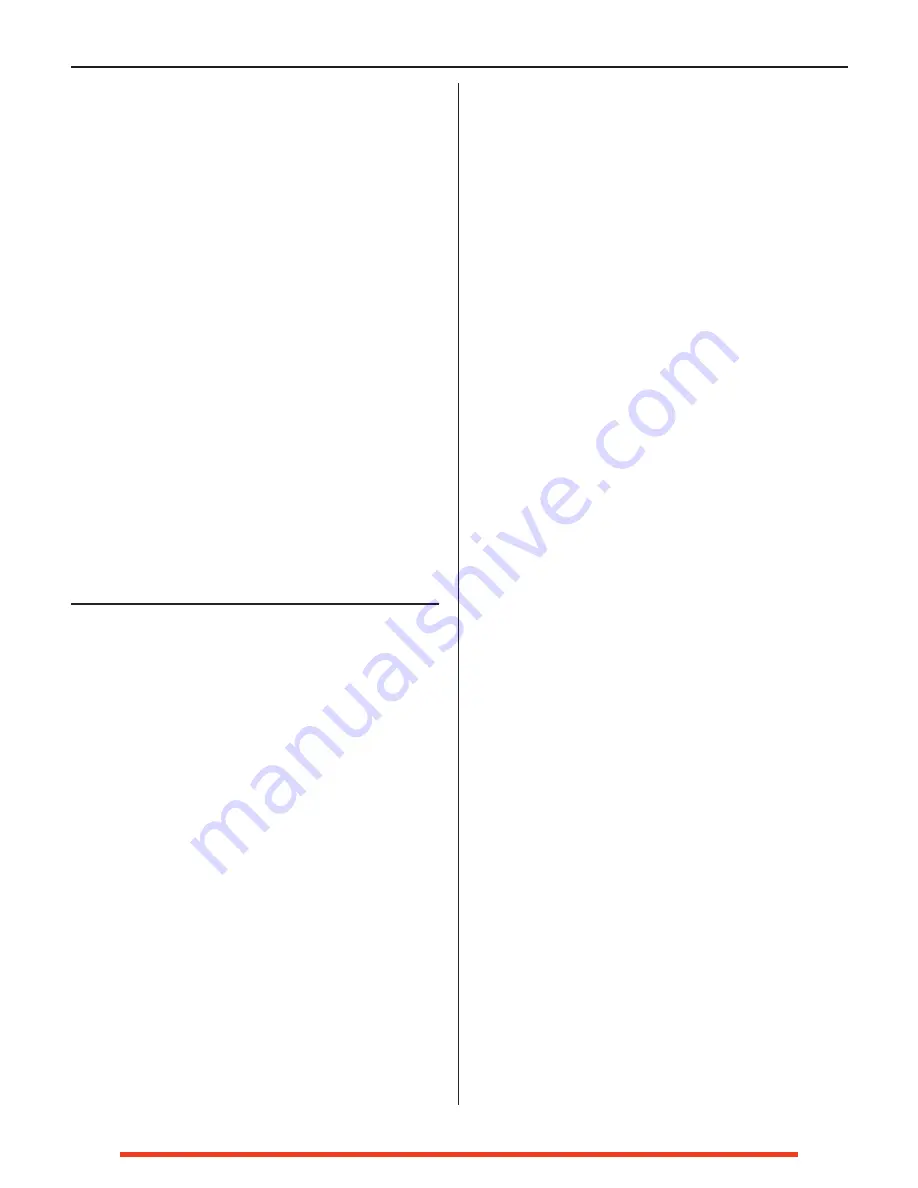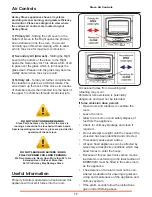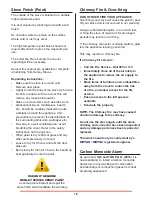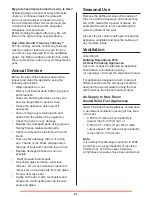
7
fig.2 Non Combustible Hearth
surrounding Solid Fuel Appliance
Ventilation
This appliance requires a constant supply of air
to maintain proper combustion and effective flue
performance.
An inadequate air supply can result in poor
combustion and smoke entering the room which
is potentially dangerous.
This supply of air can come from either:
• The natural leakage of air into the room in
which the product is fitted.
• Purpose provided ventilation.
The amount of air required must comply with
local building regulations and the rules in force.
If spillage is detected during commissioning then
there may be insufficient natural ventilation and
an additional air supply will be necessary.
Many older buildings are sufficiently ventilated
by natural leakage of air to provide suitable air
supply for an appliance of 5kW output or less.
Any air vents should be positioned so that they
are not liable to blockage.
Chimney
Please refer to the current issues of
British Standards BS EN 15287-1:2007 -
design,installation and commissioning of
chimneys
before commencing installation
The chimney draw is critical on any installation
and should be checked to ensure that it matches
what is specified. If the draw is higher than
recommended, we advise that provision must be
made to correct the overdraw. The draw can vary
in different weather conditions and the customer
should be made aware of this. Failure to correct
an over-drawing flue will invalidate the warranty,
and may damage the appliance.
Please remember that chimney draught is
dependent on four main factors.
• Flue gas temperature • Flue height • Flue
size • Flue terminal
The flue or chimney system must be in good
condition. It must be inspected by a
HETAS /
METAC
Qualified Installer and passed for use
with the appliance before installation. Products of
combustion entering the room can cause serious
health risks.
The following must be checked:
• The construction of the masonry chimneys,
flue block chimneys & connecting flue pipe
system must meet requirements of the Building
Regulations.
We recommend a flexible flue liner system
certified for use with solid fuel systems be used
to improve stove performance. The flue liner
must be removed when an appliance is replaced,
unless proven to be recently installed and in
good condition.
If it is necessary to fit a register plate it must
conform to the Building Regulations.
•The minimum height of the flue or chimney must
be 4.5m from the hearth to the top of the flue,
with no horizontal sections & a maximum of 4
bends. Bends must have angles of less than 45
degrees from the vertical.
Ensure the connecting flue pipe is kept a suitable
distance from any combustible material and does
not form part of the supporting structure of the
building.
Make provision to remove the appliance without
the need to dismantle the chimney.
Any existing flue must be confirmed as suitable
for the new intended use as defined in the
Building Regulations.
The flue or chimney systems must be inspected
and swept to confirm the system is structurally
sound and free from obstructions.
If the chimney is believed to have previously
served an open fire it must be swept a second
time within a month of regular use after
installation to clear any soot falls that may have
occurred due to difference in combustion levels.
The flue exit from the building must comply with
local building control rules.
Do not connect or share the flue or chimney
system with another heating appliance.
Do not connect to systems containing large voids
or spaces over 230mm square.








































